Nyaya Health: Improving Healthcare in Western Nepal
How can four young men under 30 build an international non-profit organization in two years? The answer is simple -- passion. All you need is a passion for nyaya, justice in Nepali.
Duncan Maru and Sanjay Basu are medical students. Their friend, Dr. Jason Andrews, is now a medical resident at the University of California San Francisco. Dr. Andrews spent some time in Achham, Nepal and came back shaken by what he had seen. He e-mailed Duncan and Sanjay. They got the ball rolling.

The ball rolled so far that it touched Bibhav Acharya, who was working for the New York State Department of Health. Bibhav is a native of Nepal who moved to the United States to go to college. He said, "I grew up about 120 miles west of Achham. Achham was always known as a place that was marginalized by the central government. I always wanted to do something in that area. So, when I heard of Nyaya, I started working very closely with them."
Together, these four young men -- Dr. Andrews, Sanjay, Duncan and Bibhav -- built Nyaya Health. [Now two organizations that work together: Possible Health and Nyaya Health Nepal.] What began in early 2006 as a desire to do something about health injustice in Achham, Nepal, has grown into an organization that involves thousands of volunteers and a small paid Nepali clinical staff.
The Structure of Nyaya Health
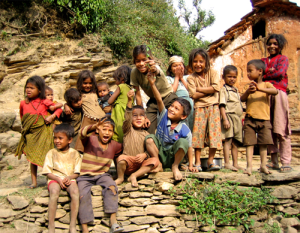
In order to establish the best possible infrastructure for Nyaya Health, the students dove into their pool of contacts, both medical and non-medical. They explored many models before deciding on one. Sanjay Basu said, "One thing that was really clear to us was that some of the most effective organizations were the ones that were really not organizations as institutions. They were organizations that helped redistribute resources and allowed community members to decide what to do with them."
Finally, they decided on a model that would be accountable, transparent, responsive and sustainable.
The Nyaya Health Model
The Nyaya Health model is a community health model based on collaboration with the local government and the people served. It is also both driven and refined by sound epidemiological data collection and analysis.
Volunteers, both in the United States and in Nepal, are the nervous system of Nyaya. The paid Nepali clinic staff members are the hands. Together, they provide primary care to a vastly underserved population.
The Building
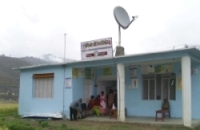
As if it had been waiting for Nyaya to transform it, the clinic building is ideally located. It sits above the flood plain, at the end of the only paved road leading into Achham.
When Nyaya Health found the building, it was a 1200 square foot grain shed. But it was structurally sound, and the owner was agreeable to its transformation.
On April 7, 2008 the former grain shed doors opened as a new clinic with a delivery suite, pharmacy, counseling room, procedure room, laboratory and storage room.
The Patients
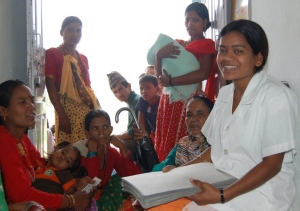
On a typical day, 60 primary care patients are treated at the clinic, though the number has been as high as 120. About a quarter of these patients are children under age five. Malnutrition is prevalent. Malnutrition is frequently compounded by helminthic (worm) infection, which is endemic in the region. The combination can be life-threatening to young children but is devastating in its long-term effect on growth and development.
Maternal health is a focus of the clinic, and about 60% of the patients are women. The clinic provides prenatal care as well as a clean, safe environment for delivery.
The twin epidemics in the region are tuberculosis and HIV. The clinic focuses on treating these epidemics as primary care illnesses by providing medication, counseling and support.
The Staff
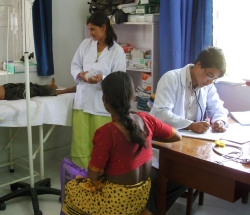
Currently the clinic employs an all-Achhami staff, including a physician, four nurse-midwives, a lab technician, a community health worker, two pharmacists/health assistants, two health aides, a cook and a clerk.
The professional clinic staff members were hired from Nepali schools of medicine, nursing and allied health. Bibhav Acharya, who is now a first year medical student, spearheaded the effort to recruit volunteers and hire staff. Speaking of both Nepali volunteers and Nepali clinic staff he said, "Our [hiring] criteria was that everyone share the common vision that this is an area of great need, and we need to all work together to do as much as we can. It's not just any job. It's more like a lifestyle."
The Volunteers
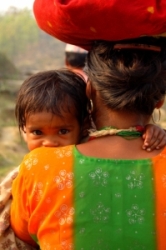
Volunteers are international and come from all walks of life and from all areas of work. As well as volunteers from the healthcare professions, there are forestry students, computer scientists, financial entrepreneurs and other disciplines too numerous to mention.
Some of these volunteers, both Nepali and American, are called vision leaders. They volunteer on-site at the clinic for several months at a time.
Duncan Maru said, "We also aim to have on the ground at all times two, preferably three, 'vision leaders,' who are unpaid by Nyaya Health [but] feel deep in their bones a sort of desperation to advance social justice and healthcare equity. That is really critical to moving along our program and seeing it through. They ensure that staff have all they need. They don't direct staff [or provide clinical care], but rather they inspire."
He continued, "We can build infrastructure by hiring people and paying for supplies and collaborating with the government, but to develop innovative strategies that ensure that marginalized patients get care, we really do rely on Nyaya's volunteer base of vision leaders."
Outreach and Technology

Nyaya Health is not restricted to one clinic. A system of outreach has been established. Every other week healthcare workers who live in outlying communities come to the central clinic for education and supplies. They return home with their knowledge and supplies to minister to their communities.
Currently there are two community outreach workers who each cover an area of about 500 people. The goal is to expand the outreach effort to 20 workers over the next few months.
Nyaya uses the Internet and telecommunications to link the central clinic to the outside world. This not only improves educational initiatives, it also improves staff morale.
Innovative Funding
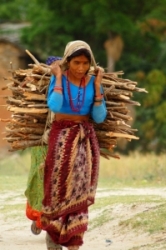
Nyaya Health is a 501(c)(3) nonprofit organization. It accepts donations, 100% of which is dedicated to medical delivery and service.
In addition to corporate and private donations, Nyaya Health, spearheaded by Duncan Maru with the help of ProEdit Japan, founded EquityEdit as a fund-raising mechanism. Editors working with EquityEdit donate a portion of their compensation to Nyaya. In addition, ProEdit Japan also donates to Nyaya for each edit completed.
"EquityEdit follows our framework of a US-based social movement that's trying to advance global health justice," said Duncan.
A Blueprint for the Future
Duncan Maru summed up the spirit and passion of this group of young men when he said, "An aspect [of Nyaya] that has been most exciting or enjoyable is working to figure out a structured way in which people who see that poverty or inequality exists or that people are dying from preventable reasons can contribute."
According to Sanjay Basu, Nyaya Health is a "group of people who came together."
Perhaps it is more than that. Perhaps nyaya is not only justice. Perhaps it is hope -- for global understanding, compassion and, ultimately, unity.
About the Author
Mary Lou Bernardo, PhD, MSN is a freelance health and medical writer in Branford, Connecticut.
About Angels in Medicine
Angels in Medicine is a volunteer site dedicated to the humanitarians, heroes, angels, and bodhisattvas of medicine. The site features physicians, nurses, physician assistants and other healthcare workers and volunteers who reach people without the resources or opportunities for quality care, such as teens, the poor, the incarcerated, the elderly, or those living in poor or war-torn regions. Read their stories at www.medangel.org.